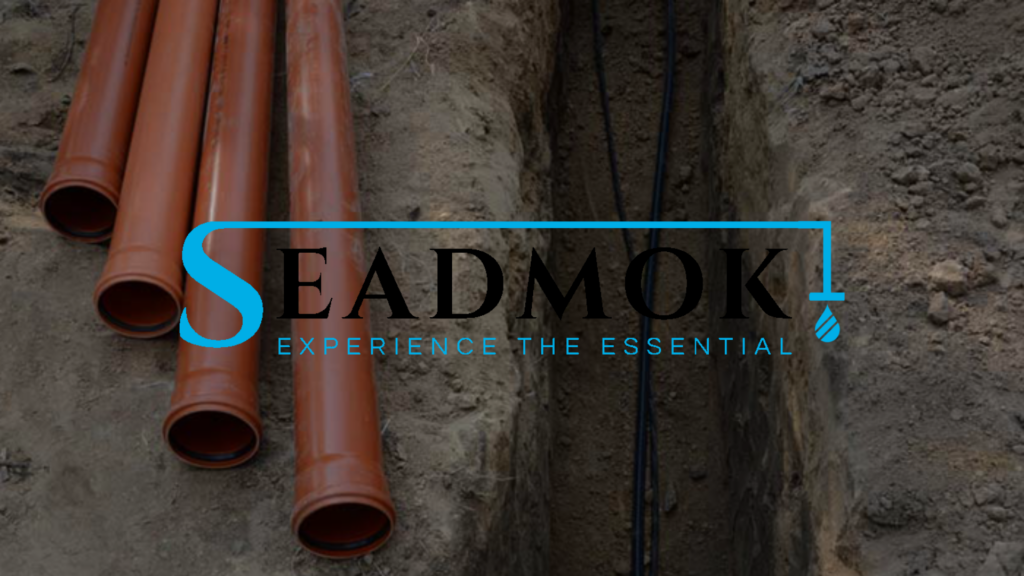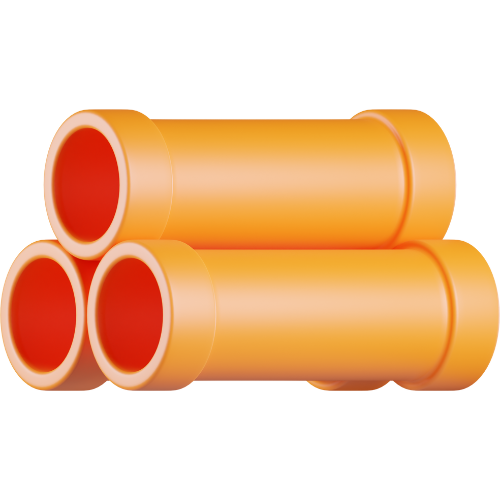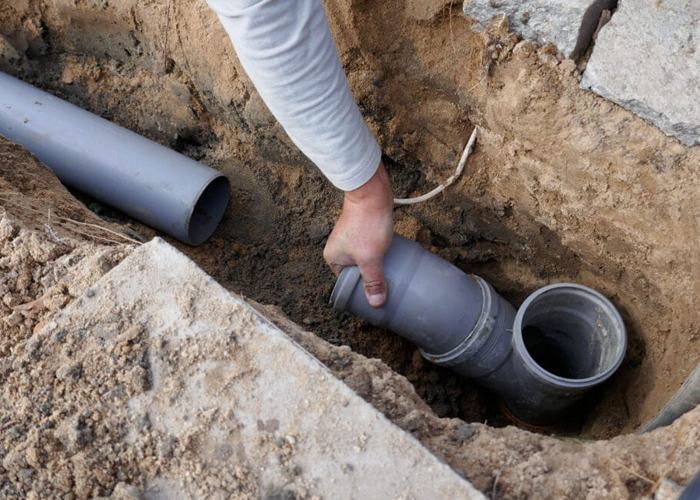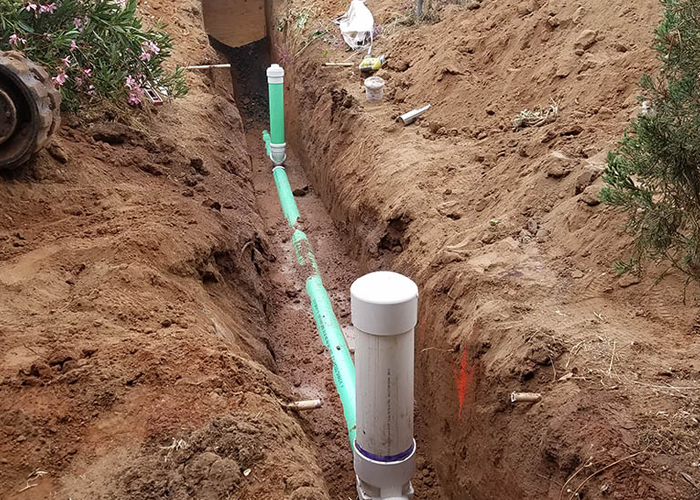
Everything There Is to Know About Sewer Laterals
Table of Contents
- Serving the following areas…
- Understanding the Need for Sewer Laterals and Connections
- Indicators that Your Building Requires a Sewer Lateral
- The Science and Structure of Sewer Laterals
- Installation, Replacement, Repair, and Inspection
- Replacement of Aging Sewer Laterals
- Lateral Lines and Septic System
- Sewer Laterals and Connection FAQs
- Conclusion on Sewer Laterals and Connections
A sewer lateral is a pipe that connects your building's plumbing to the main sewer line. It is important because it is responsible for carrying wastewater from your building to the main sewer line.
Sewer laterals play an important role in efficient wastewater management by:
- Preventing sewer backups
- Reducing infiltration and inflow
- Increasing the lifespan of the sewer system

Have Questions About Sewer Lateral Connection?
Seadmok Serves Greater Baltimore & Washington D.C.
Let’s Get Started
Serving the following areas…
Understanding the Need for Sewer Laterals and Connections
The main sewer line is a vital part of the wastewater management system, and it is responsible for transporting wastewater from homes and businesses to a treatment plant. Without a connection to the main sewer line, wastewater would have nowhere to go, and it would eventually contaminate groundwater and surface water.
Here are some of the specific reasons why it is important to connect to the main sewer line:
- To prevent sewage backups
- To protect the environment
- To comply with regulations
- To improve the value of your property
Proper wastewater disposal is important to protect public health and the environment. Wastewater can contain harmful bacteria and viruses, as well as chemicals and pollutants. If wastewater is not properly disposed of, it can contaminate groundwater and surface water, and can also spread disease.
The improper disposal of wastewater can have a significant impact on the environment and public health. Wastewater contains a variety of pollutants, including:
- Bacteria and viruses
- Heavy metals
- Toxic chemicals
Indicators that Your Building Requires a Sewer Lateral
Old or inefficient septic systems can cause a variety of problems, including:
- Sewage backups
- Groundwater contamination
- Odor problems
- Health problems
When you expand or renovate an existing building, you may need to install a new sewer lateral to connect the new addition to the main sewer line. This is because the old sewer lateral may not be large enough to handle the increased volume of wastewater.
If you are building a new home or building, you will need to install a sewer lateral to connect the building to the main sewer line. The sewer lateral will need to be sized to match the capacity of the building's plumbing system.
The Science and Structure of Sewer Laterals
A sewer lateral is a pipe that connects a private property to the public sewer system. It is typically made of clay, concrete, or plastic, and it carries wastewater from the home's drains and toilets to the main sewer line. Sewer laterals are typically the responsibility of the property owner, and they should be regularly inspected and maintained to prevent leaks and clogs.
Here are the components of a sewer lateral:
- Cleanout
- Joints
- Appurtenances
Here are some of the most common materials used in sewer lateral construction:
- Clay
- Concrete
- Polyvinyl chloride (PVC)
- High-density polyethylene (HDPE)
- Fiberglass
The difference between a pipe and a lateral is that a pipe is used to convey fluids or gasses, while a lateral is a smaller pipe that branches off from a main pipe.

Installation, Replacement, Repair, and Inspection
Installation of New Sewer Laterals
The installation of a new sewer lateral is a complex process that should be done by a qualified plumber or wastewater contractor. The specific steps involved will vary depending on the location of the lateral and the materials used. However, the general steps involved are as follows:
- The plumber will dig a trench to the location of the old lateral
- The old lateral will be removed
- The new lateral will be installed in the trench
- The joints between sections of pipe will be sealed
- The trench will be backfilled.
- The plumber will test the new lateral to make sure it is working properly
There are several key benefits to the timely installation of new sewer laterals. These include:
- Preventing sewer backups
- Reducing infiltration and inflow
- Increasing the lifespan of the sewer system
- Improving property value
Replacement of Aging Sewer Laterals
Here are some signs that your sewer lateral may need to be replaced:
- Sewage backups
- Slow drains
- Odors
- Root intrusion
- Damage from construction
The process of replacing an aging sewer lateral is a complex process that should be done by a qualified plumber or wastewater contractor. There are several benefits to replacing an aging sewer lateral. These include:
- Preventing sewer backups
- Reducing infiltration and inflow
- Improving property value
Repair of Damaged Sewer Laterals
Here are some of the most common causes of sewer lateral damage:
- Age
- Tree roots
- Construction
- Corrosion
- Improper installation
The repair process for a damaged sewer lateral will vary depending on the extent of the damage. It is important to repair a damaged sewer lateral as soon as possible. A damaged lateral can cause several problems, including:
- Sewage backups
- Infiltration and inflow
- Odor
Routine Inspection of Sewer Laterals
The frequency of sewer lateral inspection depends on several factors, including the age of the lateral, the condition of the lateral, and the risk of damage.
There are a few signs that can indicate that your sewer lateral may be clogged or poorly functioning. These include:
- Slow drains
- Sewage backups
- Odors
- Root intrusion

Lateral Lines and Septic System
In a septic system, laterals help to facilitate the flow of liquid waste from the septic tank.
There are a few signs that can indicate that your septic system is malfunctioning. These include:
- Slow drains
- Sewage backups
- Odors
- Plant growth
- Standing water
The laterals are an important part of the septic system and should be maintained regularly. This includes:
- Keeping the laterals clear of debris
- Repairing any leaks
- Replacing damaged laterals
Sewer Laterals and Connection FAQs
At Seadmok Water, we provide reliable and efficient sewer lateral and connection services to ensure that your building's wastewater is properly disposed of.
Contact us today to schedule a consultation and let our team of experts provide you with top-notch solutions for all your sewer lateral and connection needs
Conclusion on Sewer Laterals and Connections
Sewer laterals are an essential part of modern infrastructure. They play a vital role in transporting wastewater from homes and businesses to the main sewer system. Without sewer laterals, our communities would be at risk of flooding, disease, and environmental damage.
If you are concerned about the condition of your sewer lateral, or if you are experiencing any problems with your sewer system, I encourage you to contact Seadmok Water. They are a reliable and trustworthy company that can provide you with expert services.
